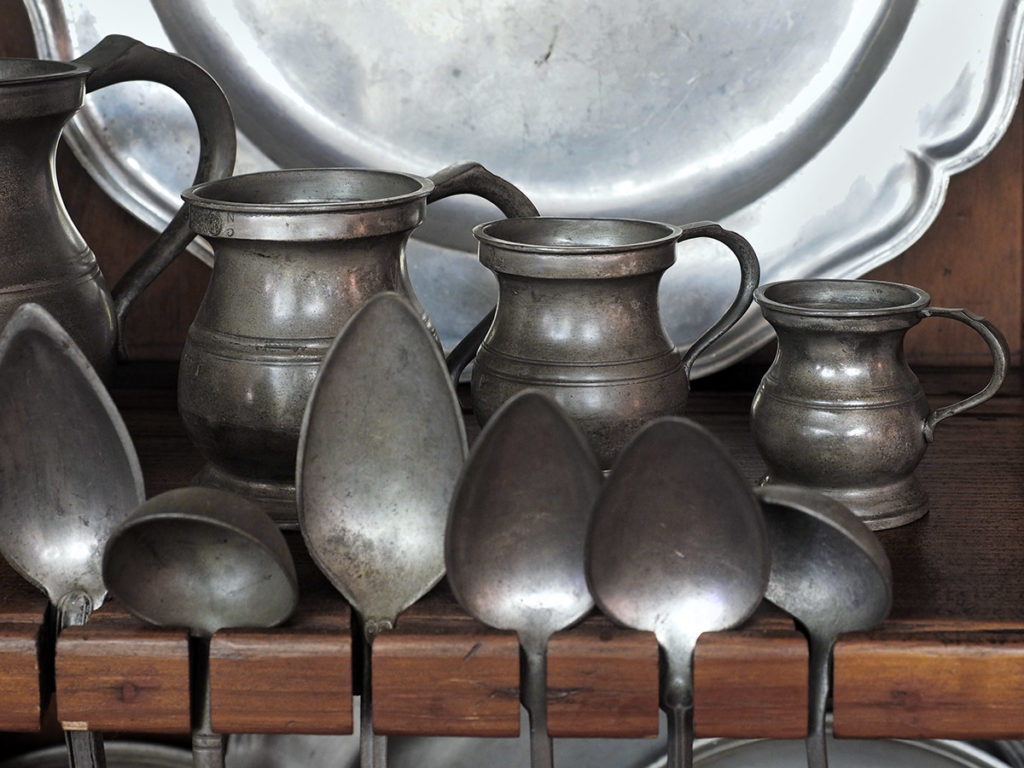

We now know the art of pewter tableware can be as lovely as it is deadly. While versions of pewter objects sold in the U.S. since the 1970s contain no lead, those created during the previous two centuries contain as much as 20% of the poisonous metal.
In medieval times, the mixing and melting of tin and lead together gave rise to a particularly utilitarian material that had a low melting point and could be poured into brass molds to produce intricate, rigid, and highly durable tableware resistant to corrosion. This included plates, bowls, pitchers, teapots, tankards, goblets, spoons, and the like. The problem was that generations of early Americans ingested an ongoing diet of lead leeched from the containers by foods and beverages. In the body, the toxic metal permanently accumulated in the brain and other organs, producing a variety of maladies — one of the worst of which was severe cognitive loss.
By the 18th century in Europe and Colonial America, pewter tableware was ubiquitous among the middle and upper classes. It was not only just a utensil involved in serving and eating food, but a status symbol of a family’s position and wealth.
Today’s archaeologists studying 18th-century America know that excavated bones and hair showing high levels of lead poisoning are likely those of affluent individuals. Colonial society’s masses of enslaved Africans and poor whites couldn’t afford the luxury of pewter-ware; they tended to contain their edibles and drinkables in vessels made of wood, animal horn, or cheap ceramics (whose firings fused their glazes’ lead into an impermeable, glass-like coating).



